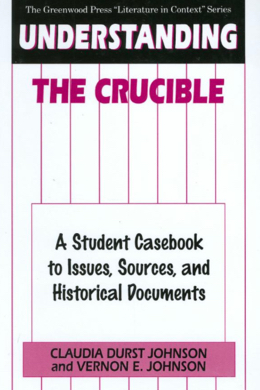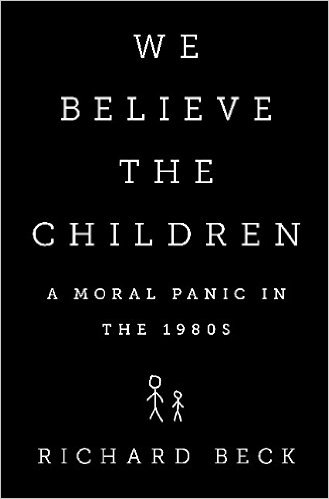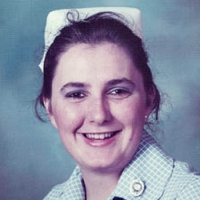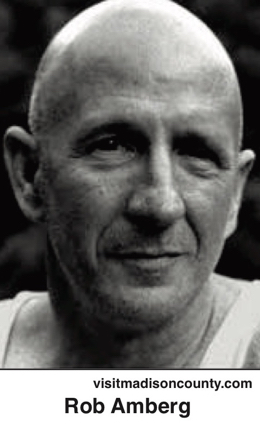Rascals case in brief
In the beginning, in 1989, more than 90 children at the Little Rascals Day Care Center in Edenton, North Carolina, accused a total of 20 adults with 429 instances of sexual abuse over a three-year period. It may have all begun with one parent’s complaint about punishment given her child.
Among the alleged perpetrators: the sheriff and mayor. But prosecutors would charge only Robin Byrum, Darlene Harris, Elizabeth “Betsy” Kelly, Robert “Bob” Kelly, Willard Scott Privott, Shelley Stone and Dawn Wilson – the Edenton 7.
Along with sodomy and beatings, allegations included a baby killed with a handgun, a child being hung upside down from a tree and being set on fire and countless other fantastic incidents involving spaceships, hot air balloons, pirate ships and trained sharks.
By the time prosecutors dropped the last charges in 1997, Little Rascals had become North Carolina’s longest and most costly criminal trial. Prosecutors kept defendants jailed in hopes at least one would turn against their supposed co-conspirators. Remarkably, none did. Another shameful record: Five defendants had to wait longer to face their accusers in court than anyone else in North Carolina history.
Between 1991 and 1997, Ofra Bikel produced three extraordinary episodes on the Little Rascals case for the PBS series “Frontline.” Although “Innocence Lost” did not deter prosecutors, it exposed their tactics and fostered nationwide skepticism and dismay.
With each passing year, the absurdity of the Little Rascals charges has become more obvious. But no admission of error has ever come from prosecutors, police, interviewers or parents. This site is devoted to the issues raised by this case.
On Facebook
Click for earlier Facebook posts archived on this site
Click to go to
Today’s random selection from the Little Rascals Day Care archives….
Click for earlier Facebook posts archived on this site
Click to go to
Today’s random selection from the Little Rascals Day Care archives….
Salem to Edenton was a road heavily traveled
 Feb. 9, 2015
Feb. 9, 2015
The Little Rascals Day Care case has often been likened to the Salem Witch Trials, but this lengthy list from “Understanding The Crucible: A Student Casebook to Issues, Sources, and Historical Documents” by Claudia Durst Johnson and Vernon Johnson (1998) drives home the point:
- Both involved children as accusers.
- Convictions were determined almost solely on the basis of the children’s testimony.
- Everything escalated rapidly – the number of children involved, the number of the accused, and the different kinds of charges.
- The minds of the children were in both cases manipulated by adults.
- Charges were instigated by adults who held grudges against the accused.
- There was an absence of corroborating evidence.
- “Fanciful” testimony was regarded seriously. In Salem, it was spectral evidence. In the twentieth-century cases, it included children’s stories of spaceships, sharks, and ritual murder.
- Community hysteria arose from the feeling that evil – witches and sex abusers – had access to their children.
- “Poppets” or dolls were involved. In the Salem trials, little dolls were immediately seized upon as poppets used by witches to pierce with pins with the object of inflicting torture. In sexual abuse cases, “anatomically correct” dolls were used by psychologists to coach details from the children.
- There were charges that satanic rituals were conducted.
- The prosecution showed a single-minded determination, by threat or bribe, to get the accused to confess.
- The prosecution showed a single-minded determination, by threat or bribe, to get children to disclose more and more details of misconduct without regard to truth.
At last, book lays bare ‘satanic ritual abuse’ era
 Aug. 10, 2015
Aug. 10, 2015
Since I undertook this blog in 2011, I’ve been waiting for a mass-market book that recalls the “satanic ritual abuse” day-care era with authority, insight and thoroughness.
“We Believe the Children: A Moral Panic in the 1980s” comes pretty darn close to meeting that standard. (I do wish author Richard Beck had addressed the significant post-panic contributions of Richard Noll and Allen Frances.)
I’ll be posting excerpts from the book and later an interview with Beck.
Meanwhile, I’ve been pleased to see the reviews in the news media – so far, all largely appreciative.
“…This book does a devil of a job correcting… all the lies and self-deceptions, so credulously believed in the 1980s….”
– From “Child Abuse Cases Endure as Lessons in Hysteria” by Mark Oppenheimer in The New York Times (Aug. 6)
“ ‘We Believe the Children’ should serve to remind us of the dangers of the ‘we must believe the victim’ mindset in the case of any criminal offense. A faith-based pursuit of justice can lead to a miscarriage of justice.”
– From “What Fueled the Child Sex Abuse Scandal That Never Was?” by Lizzie Crocker at the Daily Beast (Aug. 3)
“ ‘We Believe the Children’ reveals the various combinations of ignorance, venality, arrogance and zealotry that characterized the major players who fueled the moral panic.”
– From “A Very Model Moral Panic” by Carol Tavris in the Wall Street Journal (Aug. 7)
Here also is a radio interview with Beck and – inevitably – a response from witch-hunt denier Ross Cheit.
Latest site of ‘ritual abuse’ claims: Scotland

theguardian.com
Carole Myers/Felstead
March 21, 2016
“Once again advocates of the much discredited Satanic Abuse Panic are making claims of widespread child abuse across Britain.
“Scotland appears to have become caught up in a nationwide frenzy of superstitious irrationality. This moral panic exhibits typical clichés of sensationalist psychology. In England, the case of Carole Myers/Felstead – whose family were falsely accused of an endless variety of insane criminal acts – has comprehensively demonstrated that the existence of Satanic Cults preying on vulnerable children is a myth created on the therapist’s couch…. Real victims of abuse are being let down by focusing on this nonsense.”
– From “Recent Satanic Abuse Claims in Scotland” by the British False Memory Society (March 10)
For whatever reason, the UK seems especially resistant to having its fingers pried from the myth of “satanic ritual abuse,” which migrated from the States in the late ’80s.
![]()
‘Satanic ritual abuse’ in Sodom? Of course!
 Oct. 7, 2015
Oct. 7, 2015
“Sodom Laurel was first named Revere, and is still Revere on topographical maps, but I seldom hear anyone call it anything but Sodom. (Madison County native Dellie Norton said) she had heard that years ago, when logging first came to the region, there were numerous logging camps and a lot of men away from home, with money and time on their hands. Violence and promiscuity were rampant. Dellie had heard that a preacher, upon arriving in Revere and having seen the residents firsthand, remarked ‘You people are just like a bunch of Sodomites.’ The name stuck.
“Lately, partly for religious reasons and, of course, the negative connotations of the name Sodom, some community members have started using the name Revere again…. But also times have changed – the community is quieter than it used to be – Revere seems a more apt description of the place.”
– From “Sodom Laurel Album” by Rob Amberg (2002)
I guess it fits that a defendant unfortunate enough to be charged with “satanic ritual abuse” would also be unfortunate enough to have his hometown known as Sodom – a coincidence surely snickered about in the culturally hostile courtroom in Asheville where Junior Chandler was convicted.
Coincidentally, the district attorney in a Hendersonville ritual abuse prosecution infamously ranted about Michael Alan Parker’s having resided in “Sodom and Saluda.” (The jury bought his Bible-pounding, but Saludans weren’t pleased.)











0 CommentsComment on Facebook